The Andean condor bird (Vultur gryphus, andean condor) is the largest flying bird in Peru and one of the largest in the world. It is predominantly black, with white feathers around the neck and on parts of the wings. The head is featherless and red.
Since ancient times it has been an important animal in the mythology and traditions of the Andean world, for example, for the Incas, who considered it immortal and the representation of the Jananpacha, the land from above, from heaven and from the future.
The condor not only lives in Peru, it also lives in Ecuador, Colombia, Bolivia, Chile, among other countries.
The meaning of the condor for the Incas
For the Incas, the condor bird was a holy bird. They thought it was a way to get between the world above (Hanan Pacha) and the world here on Earth (Kay Pacha). Called Kuntur in Quechua, this big, black bird lives mostly in the Andes Mountains. People saw it as a spirit that could travel between different parts of the universe.
Besides being like a message carrier from the gods, the condor stood for strength, freedom, and power. The Inca culture really respected it. They often drew it on pottery, cloth, and other art as part of how they saw the world.
Today, many people in the Andes still think the condor is holy. In some places in Peru, they still have the Yawar Fiesta (Blood Festival). This is an old custom where the andean condor has a main part, showing how important it is as a symbol in the Andean culture.
RELATED: WHAT DOES THE CONDOR REPRESENT FOR INCAS?
10 facts about the Andean condor bird:
- His name in Quechua is kuntur and the Incas believed that he was immortal. It represented the Jananpacha, the land above, the sky and the future.
- The distance between the tips of its spread wings (about 3.3 meters) represents the largest wingspan of a land bird.
- They are monogamous and the two parents hatch the egg. Their young remain with parents for up to 2 years before facing the world alone.
- At certain times of the year (in October in Peru), they fly from the tops of the Andes to the Pacific coast to eat the carrion of dead sea lions.
- It is one of the only predators that can break the hard skin of guanacos with its beak.
- It matures sexually late (minimum at 5 years, with some reports of the first calf at 11 years old), and they only have one calf every 2-3 years. This makes them very vulnerable to threats.
- It is part of the Cathartidae family, which comes from the Greek kathartes which means "he who cleans".
- It flies thanks to the thermal sight, which helps you see the carrion from very high and reach it without wasting energy.
- Males have a white collar and a crest that differentiates them from females.
- It is found in four national shields, where it represents different values: Bolivia (search for a limitless horizon), Chile (strength), Colombia (freedom and order), and Ecuador (power, greatness and value).
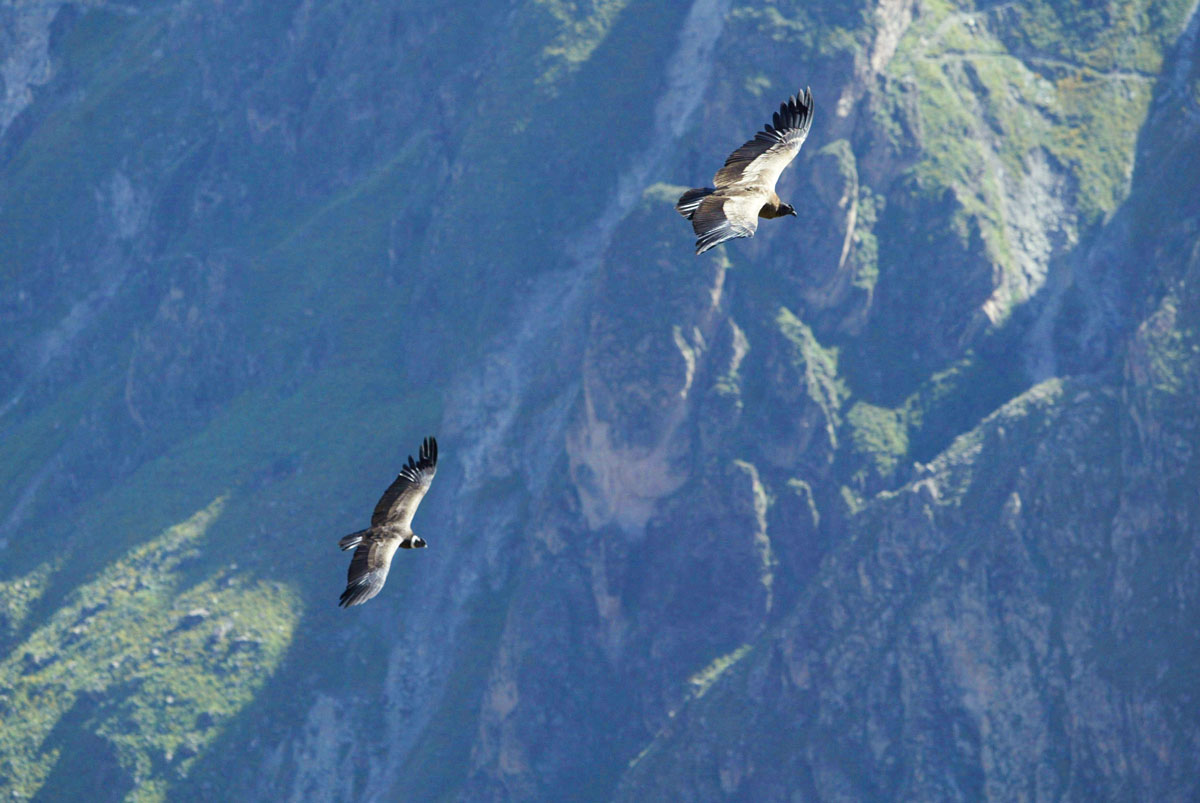
A majestic bird
The Andean condor bird is the largest bird in the world and is very important in how people in the Andes see the world. People have admired it for a long, long time. Even though it's important to the culture and a big part of what Peru has, the Andean condor is in danger now, both everywhere and in Peru.
Also, where it lives goes from the coast to the highest parts of the Andes Mountains. It can fly very high, easily reaching 7000 meters above sea level. Now, what this bird eats is almost only dead animals, which it finds from the air because it has very good eyesight.
For specialists, such as the Wildlife Conservation Society (WCS), the Andean condor plays an important ecological role as a scavenger because it accelerates the decomposition process of dead animals, thus reducing the risk of diseases associated with slow rotting animals.
Also, you usually see it in far-away places in the Andes and in natural areas that are in good shape. This makes it interesting for nature tourism. So, if it's managed well, watching the giant condor can become a way for local people to earn money without harming the environment. At the same time, it helps protect the bird and where it lives.
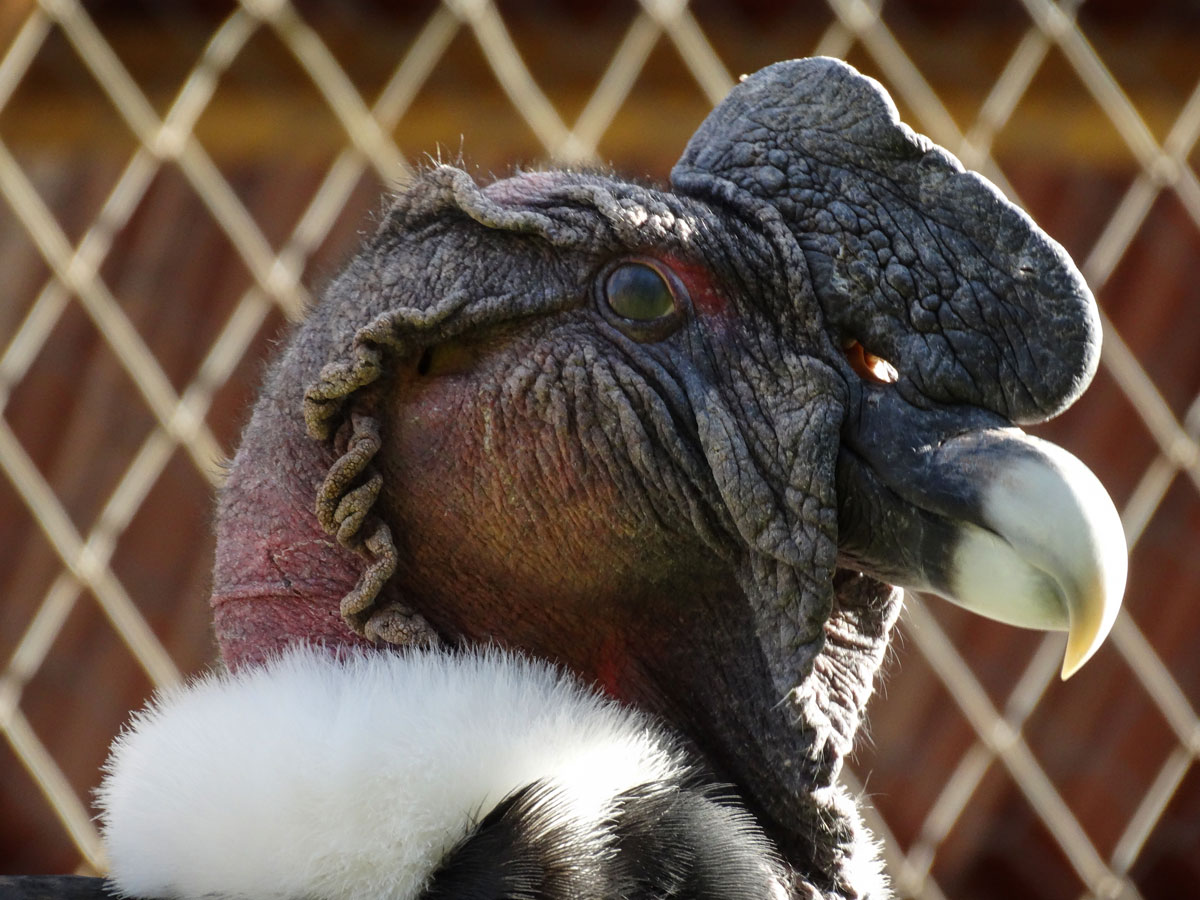
RELATED: HOW MANY SPECIES OF HUMMINGBIRDS ARE IN PERU?
Characteristics of the Andean condor bird
The Andean condor is one of the most awesome and important birds of South America. It is a sign of power and freedom in many Andean cultures. Besides its strong symbolic meaning, this bird stands out because of its amazing body and behavior, which make it a true giant of the skies.
Body Features
- Size and wingspan: The Andean condor is one of the biggest flying birds on Earth. Grown-ups get to be between 100 and 130 cm long, and their wings can spread up to 3 meters (about 10 feet). This huge size lets them fly long distances without hardly flapping their wings.
- Special feathers: They mostly have black feathers with white feathers around their neck (making a collar) and white spots on the top of their wings, which you can see when they fly. Young birds, however, have dark brown feathers that turn black as they get older.
- Head and neck: Their head and neck have no feathers, and they can change color a little bit depending on how they feel or when they are mating. This also helps to lower the amount of germs after they touch dead animals.
- Boy and girl differences: Unlike many other birds of prey, the boy Andean condors are bigger than the girls. The boys have a noticeable fleshy crest (caruncle) on their head and extra folds on their neck, which the girls don't have or have less of.
- Long life and strength: This bird can live for more than 50 years in the wild and up to 70 in zoos. Because they live a long time and don't have many babies, they are very easily hurt by things happening in nature and by people.
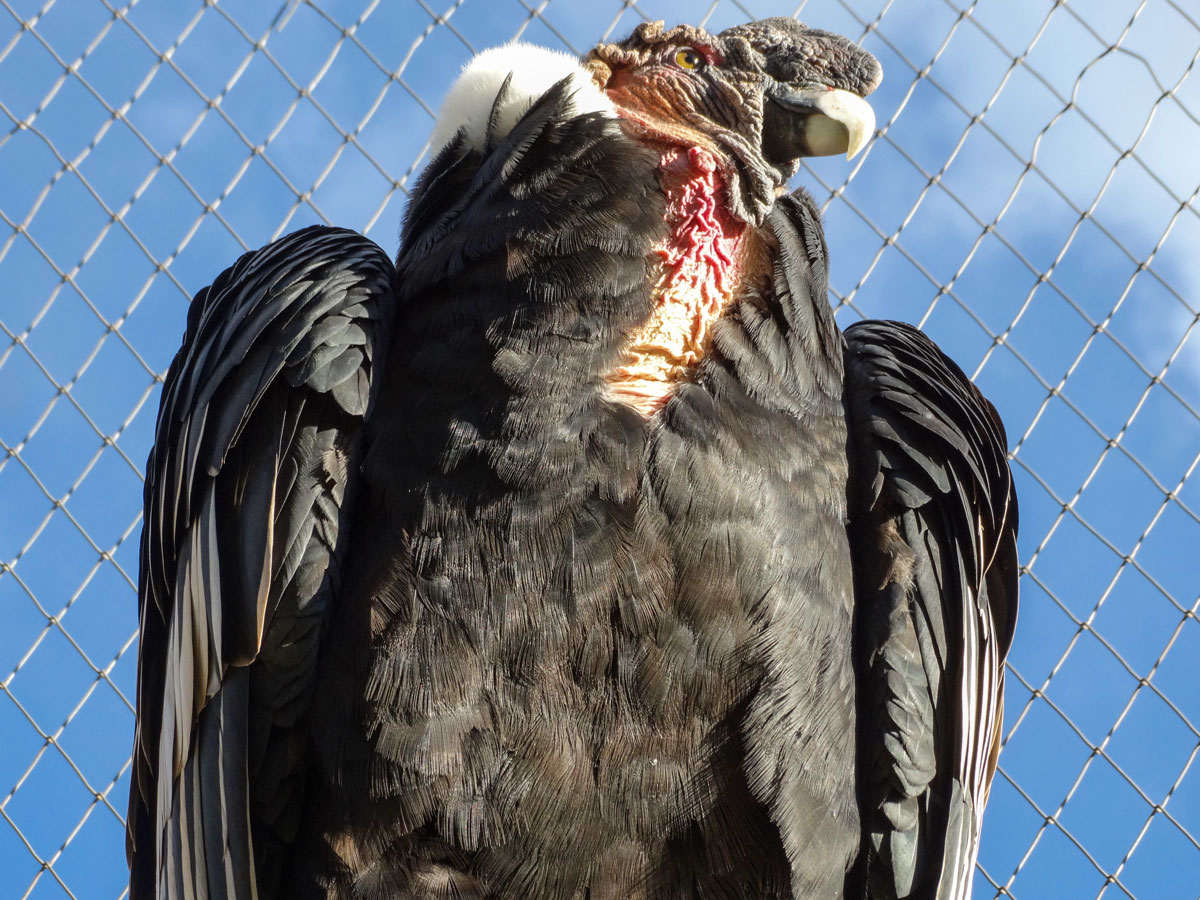
| The male Andean condor has a crest and folds on its face and neck that increase over time. |
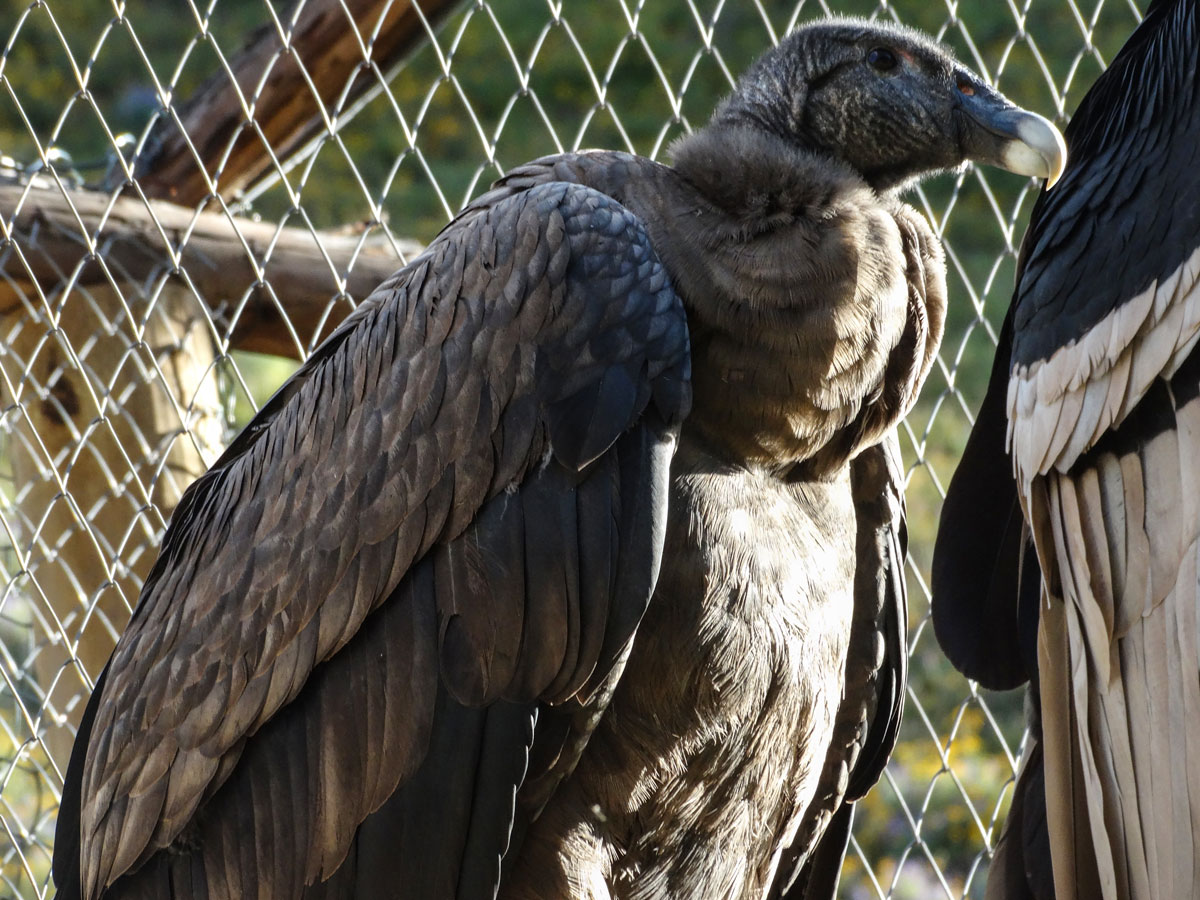
| The females of this species do not have the crest but they do have the folds. |
Behavior and Habits
- Eating dead animals: The condor has a very important job in nature as a scavenger, because it mostly eats dead animals, which helps to keep the environment clean. It has very good eyesight that lets it see dead animals from very high up.
- Flying well: Because of their giant wings and how they use rising warm air, they can travel hundreds of kilometers without much effort. They can stay in the air for hours without moving their wings, which makes them great at gliding.
- Having babies and taking care of them: The Andean condor stays with the same partner for life. They make nests in places that are hard to reach, like high cliffs. The girl usually lays only one egg every two years, and both the boy and girl help to sit on the egg for about 54 to 58 days. The baby bird stays with its parents for more than a year.
- Being social: Even though they usually fly alone, condors gather together when they find food. It's common to see many of them eating together or resting on rocks together.
- Where they live: They live along the Andes Mountains, from Venezuela to the bottom of Argentina, liking open high mountain areas, cold deserts, and cliffs by the sea where they can nest and glide easily.
The condor animal stands out for its elegant flight and its long planes. Due to being a very heavy bird, it uses the air currents that occur in the mountains. This means that it can be in the air for a long time, for this reason it can sometimes be seen in areas of the Atlantic and Pacific Ocean, since the condor takes advantage of the strong air currents of the sea.
Andean condor feeding
Their diet is mainly based on dead animals. In certain occasions it can get to hunt small animals. Thanks to its long flight, the condor can travel long distances in scarce time to search for food.
The condor can detect its food by the smell of gas emanating from the decomposition of a carcass.
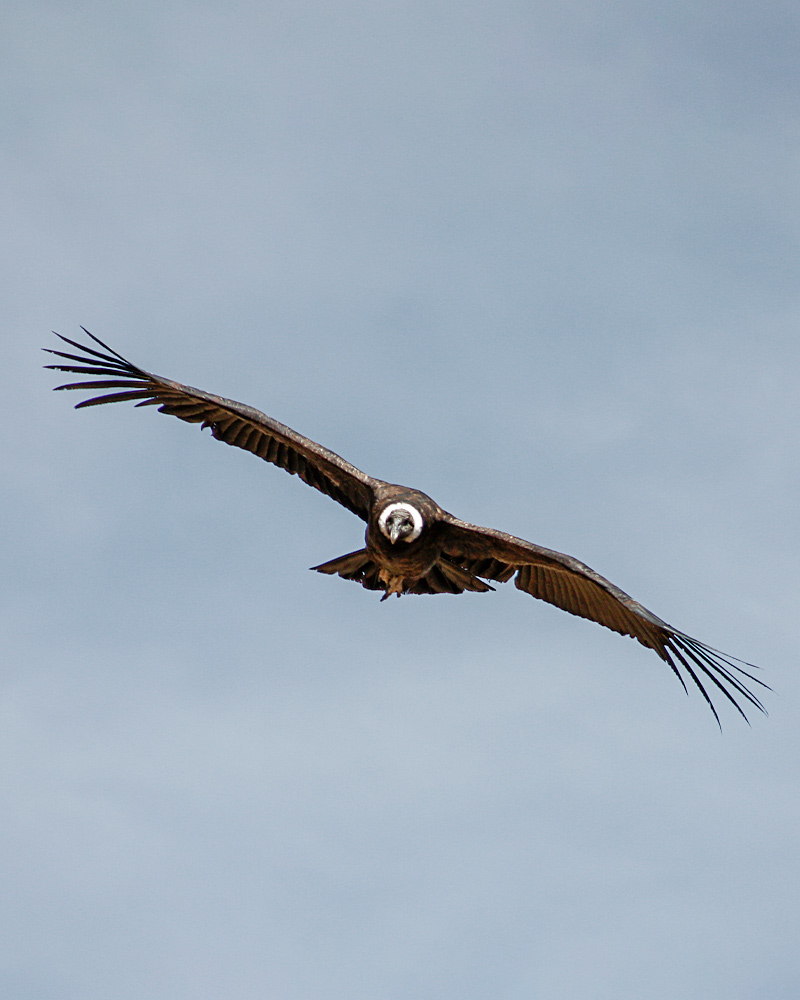 |
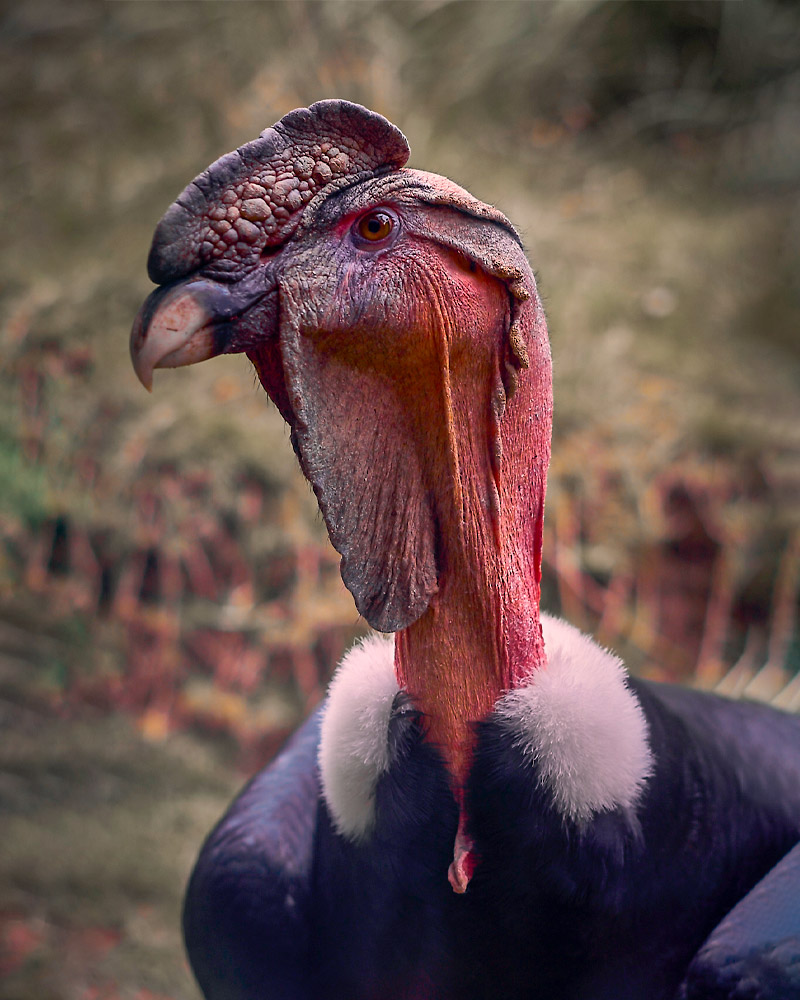 |
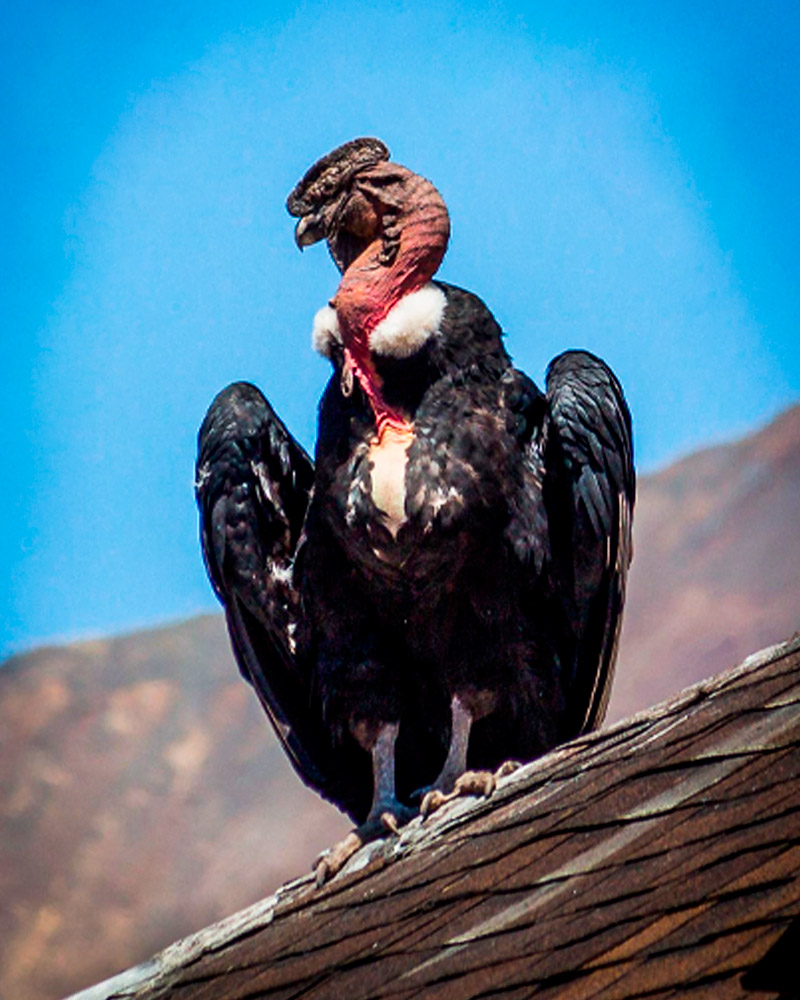 |
Habitat of the Condor Animal
Its distribution range narrows across the Andes from the north in Colombia to the southern tip of Chilean and Argentine Patagonia, passing through Peru, Ecuador and Bolivia.
This condor animal lives in high altitude areas such as the Colca Valley (1,131 kilometers southeast of Lima), in Arequipa; although it has also been seen in some places on the coast. The condor is associated with Andean culture and mythology. Due to this and other factors it is in danger of extinction.
The habitat of the condor covers the entire Andean region, in Peru populations can be seen in Arequipa, Cusco, Apurímac, Lima, Junín, Huancavelica, among other regions. There are joint efforts, public and private, for the conservation of this species.
Where to see?
In order to appreciate the condor in Perú in its natural habitat, we must move to rocks between 1,000 to 5,500 meters above sea level, which is where they build their nests and hatch their young.
In Peru, one of the most famous and preferred canyons to appreciate the overflight of the condor is located in the city of Arequipa in the Colca Canyon (how to get there), this canyon is one of the deepest in the world and for this reason it is Perfect place for the nest of hundreds of condors that every day go out in search of food to feed their young.
Another place that is slowly gaining its place for the observation of the Condor flyby, is the Apurimac Canyon in the Chonta sector in the city of Cusco. From this point you can see the birds and at the moment it is not as crowded as its counterpart in Arequipa.
If you visit Perú is a great opportunity to see a condor flying and also visit Machu Picchu hiking the 4 day Inca Trail Tour, 2 day Inca Trail, Machu Picchu 3 day hike, 2 day Inca Trail with camping, One day Inca Trail, Choquequirao to Machu Picchu Trek or the Lares Trek to Machu Picchu. And also, you can visit Choquequirao, know as the sister of Machu Picchu through the Choquequirao Trek 5 Days or the Choquequirao Trek 4 Days.
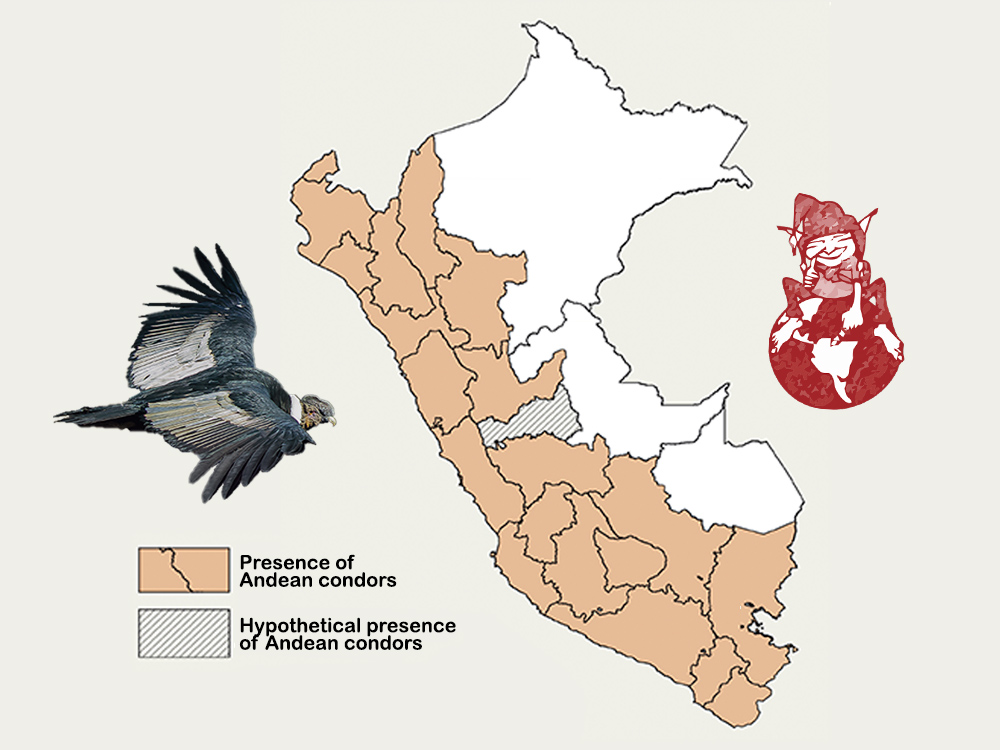
What is the best time to see it?
The Condor flyby is throughout the year; However, the best time to appreciate this show is in the "dry season" given the low presence of rain, since condors to go hunting or search for dead animals - since they are scavenger birds - need a favorable climate and currents of hot air that can help them take flight given their size.
The dry season in Peru specifically in Arequipa (City Tour Arequipa) and Cusco (City Tour Cusco) is between the months of May to October that would be the best months to visit the places where this imposing bird can be seen in its natural habitat.
You can not miss the opportunity to appreciate this impressive spectacle of the largest bird in the world!
In danger of extinction
In Perú, the Andean condor is a species classified as Endangered, according to Supreme Decree No. 004-2014-MINAGRI and which is protected by the Peruvian State. At the international level, it is protected by the Convention on International Trade in Endangered Species of Wild Fauna and Flora (Cites) and by the Convention for the Conservation of Migratory Species, of which Peru is a party.
The main causes of the reduction of the population of this species are illegal hunting and capture for the use of specimens in traditional festivals and the commercialization of their feathers and parts; the intoxication and poisoning to which they are subjected by the false belief that they hunt cattle; as well as the decrease in the quality of the habitat. Its geographical distribution in Peru covers the regions of Piura, Lambayeque, Áncash, Lima, Ayacucho, Ica, Arequipa, Cusco, Puno, Apurímac, Amazonas, Moquegua.
Peru Famous Animals: Awesome Native Animals of Peru
- Animals Native to Peru
- Machu Picchu Llama or Alpaca
- National bird of Peru
- Where to see Alpacas in Peru







